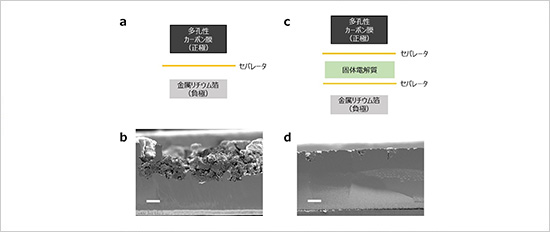2023-01-27 インペリアル・カレッジ・ロンドン(ICL)

Many of Earth’s volatiles came from beyond Jupiter
◆地球上に存在する揮発性元素である亜鉛の約半分は、太陽系外縁部の小惑星(小惑星帯の先にある木星、土星、天王星を含む部分)に由来していることがわかったのです。この物質は、水のような他の重要な揮発性物質も供給していたと考えられている。
◆揮発性物質とは、比較的低い温度で固体または液体から蒸気に変化する元素や化合物のことである。生物に含まれる最も一般的な6つの元素と水が含まれる。このため、地球上に生命が誕生するためには、この物質が加わることが重要であったと考えられます。
◆これまで、地球の揮発性物質のほとんどは、地球に近い場所で形成された小惑星からもたらされると考えられていました。今回の発見は、地球が生命を維持するために必要な特別な条件をどのように保有するようになったかについて重要な手がかりを与えるものです。以前の研究は、地球がほとんど太陽系内物質からのみ形成されたことを示唆し、研究者は、それが地球の揮発性化学物質の主な供給源であったと推測していました。それに対して、今回の発見は、太陽系外縁部がこれまで考えられていたよりも大きな役割を果たしたことを示唆しています。
◆Mark Rehkämper教授は、「この太陽系外縁部の物質の貢献は、地球の揮発性化学物質の在庫を確定する上で極めて重要な役割を果たしました。太陽系外物質の貢献がなければ、地球の揮発性化学物質の量は現在よりもずっと少なくなっていたでしょうし、地球を乾燥させ、生命を育み維持することができなくなる可能性もあります。
◆この研究結果は、Science誌に掲載されています。
◆この研究では、非炭素質隕石と呼ばれる太陽系内側の隕石11個と、炭素質隕石と呼ばれる太陽系外側の隕石7個の、さまざまな起源を持つ18個の隕石を調査した。
◆それぞれの隕石について、5種類の亜鉛の同位体比を測定したのです。そして、それぞれの同位体の指紋を地球のサンプルと比較し、これらの物質が地球の亜鉛インベントリーにどれだけ寄与したかを推定したのです。その結果、地球が炭素質物質から取り入れた量は全体の約10%に過ぎないが、地球上の亜鉛の約半分は炭素質物質から供給されていることが示唆された。
◆次に研究者たちは、41億年から30億年前に水を蓄えていた火星と月の岩石を分析する予定です。Mark Rehkämper教授は次のように語った。「月は、約45億年前に巨大な小惑星が誕生したばかりの地球に衝突してできたという説が有力です。月の岩石中の亜鉛同位体を分析することで、この仮説を検証し、衝突した小惑星が水を含む揮発性物質を地球に運ぶのに重要な役割を果たしたかどうかを判断することができます。”と述べています。
<関連情報>
- https://www.imperial.ac.uk/news/242771/meteorites-reveal-likely-origin-earths-volatile/
- https://www.science.org/doi/10.1126/science.abn1021
隕石中の亜鉛の核合成同位体異常が地球揮発性物質の起源を拘束する Nucleosynthetic isotope anomalies of zinc in meteorites constrain the origin of Earth’s volatiles
Rayssa Martins,Sven Kuthning,Barry J. Coles,Katharina Kreissig,Mark Rehkämper
Science Published:26 Jan 2023
DOI: 10.1126/science.abn1021
Nucleosynthetic anomalies in meteorites
The origins of the material that accreted to form Earth can be constrained using meteorites that contain leftover material from planet formation. Nucleosynthetic anomalies are small differences in isotope ratios left by incomplete mixing of presolar material. They are already known for refractory elements, which condense into dust grains first, but it has been unclear whether more volatile elements were fully mixed before planet formation. In two complementary papers, Martins et al. and Nie et al. identified nucleosynthetic anomalies in the moderately volatile elements zinc and potassium, respectively. They used cosmochemical models to determine that about 90% of Earth’s mass was contributed by noncarbonaceous inner Solar System material, whereas about 10% came from carbonaceous outer Solar System material. The latter source contributed about 20% of Earth’s potassium and half of its zinc. —KTS
Abstract
Material inherited from different nucleosynthesis sources imparts distinct isotopic signatures to meteorites and terrestrial planets. These nucleosynthetic isotope anomalies have been used to constrain the origins of material that formed Earth. However, anomalies have only been identified for elements with high condensation temperatures, leaving the origin of Earth’s volatile elements unconstrained. We determined the isotope composition of the moderately volatile element zinc in 18 bulk meteorites and identified nucleosynthetic zinc isotope anomalies. Using a mass-balance model, we find that carbonaceous bodies, which likely formed beyond the orbit of Jupiter, delivered about half of Earth’s zinc inventory. Combined with previous constraints obtained from studies of other elements, these results indicate that ~10% of Earth’s mass was provided by carbonaceous material.



